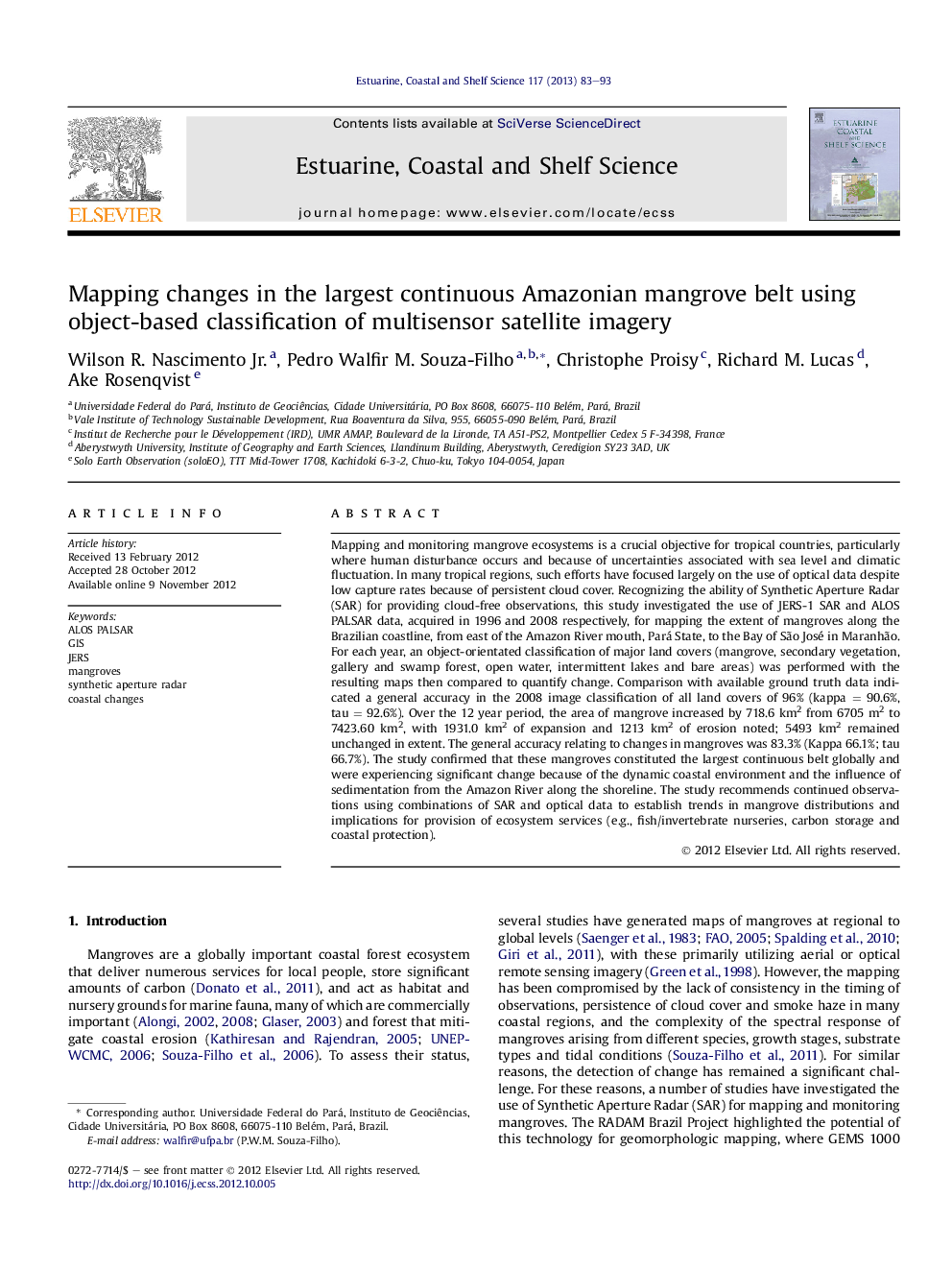| کد مقاله | کد نشریه | سال انتشار | مقاله انگلیسی | نسخه تمام متن |
|---|---|---|---|---|
| 4540085 | 1626678 | 2013 | 11 صفحه PDF | دانلود رایگان |

Mapping and monitoring mangrove ecosystems is a crucial objective for tropical countries, particularly where human disturbance occurs and because of uncertainties associated with sea level and climatic fluctuation. In many tropical regions, such efforts have focused largely on the use of optical data despite low capture rates because of persistent cloud cover. Recognizing the ability of Synthetic Aperture Radar (SAR) for providing cloud-free observations, this study investigated the use of JERS-1 SAR and ALOS PALSAR data, acquired in 1996 and 2008 respectively, for mapping the extent of mangroves along the Brazilian coastline, from east of the Amazon River mouth, Pará State, to the Bay of São José in Maranhão. For each year, an object-orientated classification of major land covers (mangrove, secondary vegetation, gallery and swamp forest, open water, intermittent lakes and bare areas) was performed with the resulting maps then compared to quantify change. Comparison with available ground truth data indicated a general accuracy in the 2008 image classification of all land covers of 96% (kappa = 90.6%, tau = 92.6%). Over the 12 year period, the area of mangrove increased by 718.6 km2 from 6705 m2 to 7423.60 km2, with 1931.0 km² of expansion and 1213 km² of erosion noted; 5493 km² remained unchanged in extent. The general accuracy relating to changes in mangroves was 83.3% (Kappa 66.1%; tau 66.7%). The study confirmed that these mangroves constituted the largest continuous belt globally and were experiencing significant change because of the dynamic coastal environment and the influence of sedimentation from the Amazon River along the shoreline. The study recommends continued observations using combinations of SAR and optical data to establish trends in mangrove distributions and implications for provision of ecosystem services (e.g., fish/invertebrate nurseries, carbon storage and coastal protection).
► The object-based classification accuracy calculation was based on different indices.
► General accuracy obtained for the SAR classification was 96.3%.
► The mangroves presented a growth of from 6705.05 km² (1996) to 7423.60 km² (2008).
► There was a net gain of 718.5 km2 equating to 10.7% in the mangrove areas.
► The area of forest in 2008 makes this the largest continuous mangrove area globally.
Journal: Estuarine, Coastal and Shelf Science - Volume 117, 20 January 2013, Pages 83–93